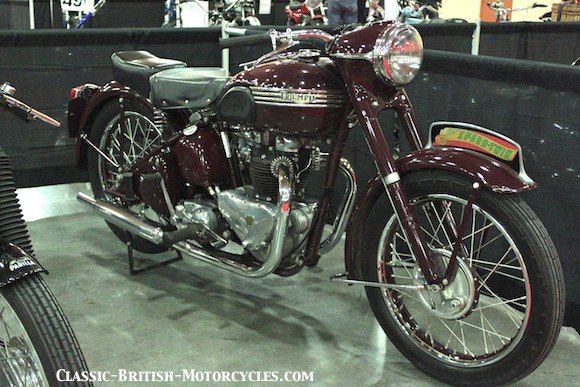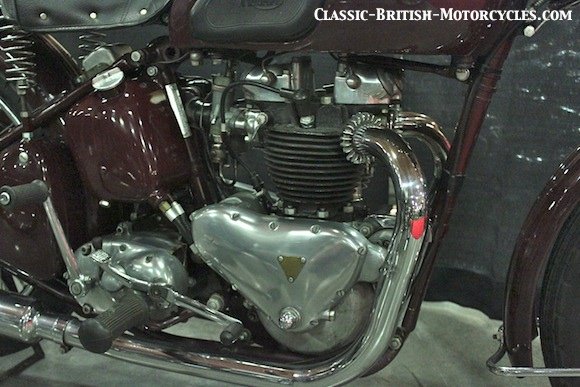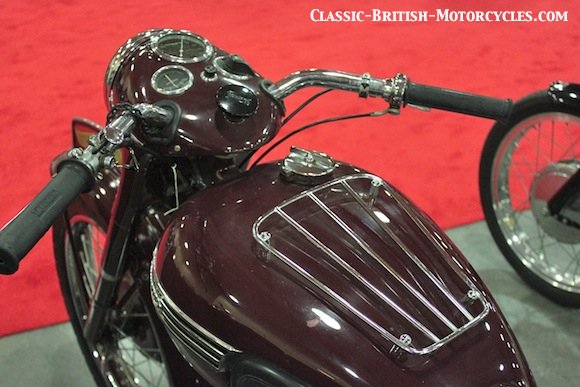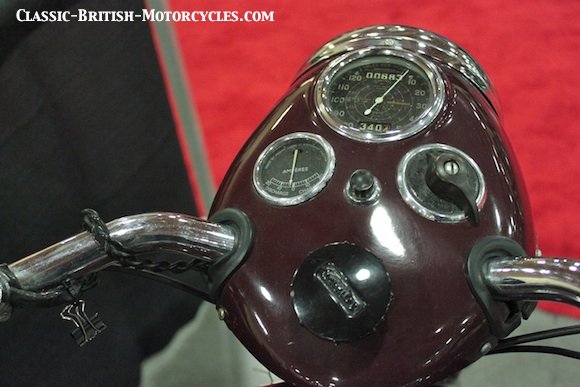1947 Triumph Speed Twin

1947 TRIUMPH SPEED TWIN LEADS THE WAY
At the end of World War II, civilian production of motorcycles ramped up quickly to tap into the tremendous pent up demand for transportation. 1946 was Triumph’s first postwar model year. The 5T Speed Twin was its best seller prior to the war, and was largely carried over as is after the war. The notable exceptions were the front and rear suspension. Gone was the old pre-war girder front fork, replaced by a modern telescopic fork. Out back, the infamous sprung hub was added to the existing rigid frame to give some semblance of ride compliance. The 1947 model is largely carried over from the 1946. By this time, Speed Twin sales were fueling Triumph’s recovery and allowed it to bankroll its success over the next decade.



1947 Triumph Speed Twin SPECIFICATIONS
|
Model Designation Engine Number prefix Engine Type Displacement Bore & Stroke Compression ratio Carburetor Engine output Top Speed Electrical system Primary drive Clutch Gearbox Final drive Frame construction Suspension, front Suspension, rear Brake, front Brake, rear Wheel, front Wheel, rear Wheelbase Seat height Ground clearance Fuel capacity Weight |
Triumph 5T Speed Twin 47-5T Air-cooled OHV vertical twin 498cc 63mm X 80mm 7.0:1 one- Amal 15/16″ 28 bhp @ 6,000 rpm 85-90 mph 6-volt, Lucas magdyno, 40watt Chain Multi-plate, wet 4-speed constant mesh, right-foot shift Chain Steel tube, brazed lug Telescopic Rigid frame, sprung hub 7-inch SLS drum 7-inch SLS drum 3.25″ X 19.0″ Dunlop Universal 3.50″ X 19.0″ Dunlop Universal 54.0″ 29.5″ 6.0″ 4 Imp gal 361 lbs, dry |



No Comment